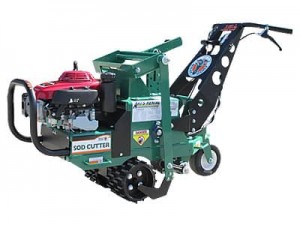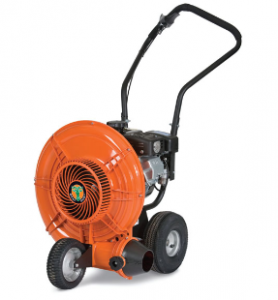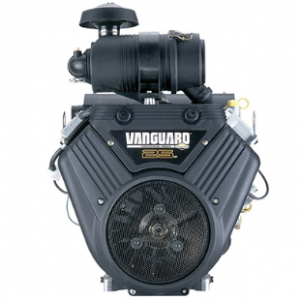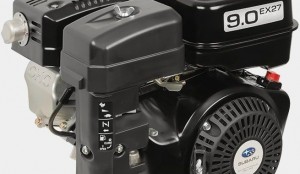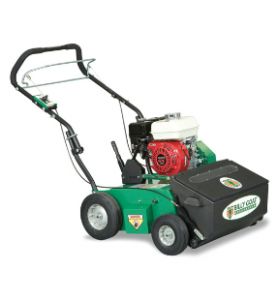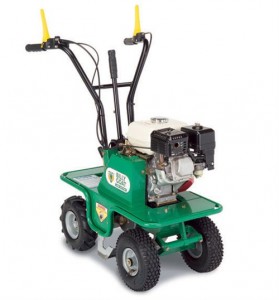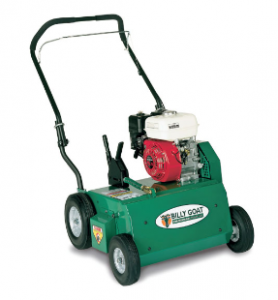Spring will be here before too long, and that means it will be time to start laying down sod, whether it’s to establish a new lawn or repair damage from snow and ice. Here’s what you need to know to keep your Billy Goat sod cutter running and fix common problems as they crop up.
Maintenance Schedule
Before every use or daily: Inspect the sod cutter for loose, worn or damaged parts.
Every 5 hours or daily: Check for excessive vibration.
First 20 hours of use: Replace transmission oil (geared transmissions only.)
Every 25 hours: Sharpen the blades and check the tire pressure.
Every 50 hours or yearly: Inspect the drive belt and grease the pivot points.
Every 100 hours: Replace transmission oil (geared transmissions only.)
Every 150 hours: Replace the blade and traction belts
Blades and belts are prone to wear and tear, so they should be checked periodically and may need to be replaced more frequently than recommended depending on use conditions. Blades can be chipped if they strike a rock, and they wear faster when cutting through dry, sandy soil.
Belt and cable tension should be checked after the first few hours of use as they can stretch during break-in.
Geared Transmission Service
The oil should be replaced after the first 20 hours of use, then every 100 hours thereafter. SAE 90 gear oil is recommended.
To check the fluid, remove the relative oil screw on the back side of the transmission case. If oil doesn’t leak out, add more fluid.
Fluid can be added through the filling cap on top of the transmission. Make sure the washer is fitted to the cap before screwing it back in.
To drain the transmission, remove the drain plug located directly below the left axle.
Hydrostatic Transmission Service
The Hydro-Gear RT-310 hydrostatic transmission used in these sod cutters is maintenance free.
Belt Replacement
Shut off the engine and disconnect the spark plug to prevent an accidental start. Remove all metal guards to access the belts. Geared models have a single cover next to the engine, while hydrostatic models have a rear, left and right side covers.
To access the forward control belt on the SC121, remove the blade. To access the blade belt, remove the connecting rod running between the bottom pulley and a bracket on the side of the frame.
To access the blade belt on hydrostatic drive models, the chain must first be removed by taking out the master link.
The forward control belt will slide off without any further work. All other belts can be removed by loosening the bolt on the idler pulley and walking the belt off of the other pulleys. Do not completely remove the idler pulley.
Replace the belt by following the removal directions in reverse order. The cable operating the clutch pulley may need to be adjusted.
Blade Inspection
To check the blades, shut off the engine and disconnect the spark plug. Move the blade height to the highest position.
The blade fixing screws and nuts are subject to wear just like the blades and should be replaced as a set. When replacing the blade on hydrostatic models, torque the bolts to 30 ft-lbs. (40.6 N-m.)
Pivot Points
Greasable pivot points include the height adjustment mechanism for the blade and the rods that hold the clutch pulleys. Billy Goat recommends an NLGI Grade 2 multipurpose lithium-based grease.
Cable Adjustment
Cable tightness can be adjusted by turning the nut on the adjuster. The adjuster for the shifter cable on hydrostatic models is located beneath the back cover. Adjusters for all other control cables are located on the handle.
The service brake cable on geared models is connected to the forward control lever. When the lever is released and the brake is engaged, there should be 2-3 mm of play between the adjustment screw and the brake cable. If the cable is tight, the brake won’t engage.
Troubleshooting Common Problems
Abnormal vibration: Check the engine mounting bolts for tightness and inspect the blades for damage.
Poor cutting performance: The blades are dull, the engine is running too slow or the sod is too dry.
Blade belt is slipping: The belt needs to be replaced.
Drive not disengaging: The drive cable tension is too tight.
Engine is locked: Debris is locking the blades or the engine is damaged.
Getting Parts for Your Billy Goat Sod Cutter
Whether you have a Next Gen Hydro-Drive, a Golf Hydro-Drive, an SC131H or one of Billy Goat’s older models, you can get everything you need for it at www.billygoatparts.com. We’re a certified dealer for Billy Goat and their manufacturing partners so we can supply you with everything you need for your equipment. We ship across the United States and Canada.

